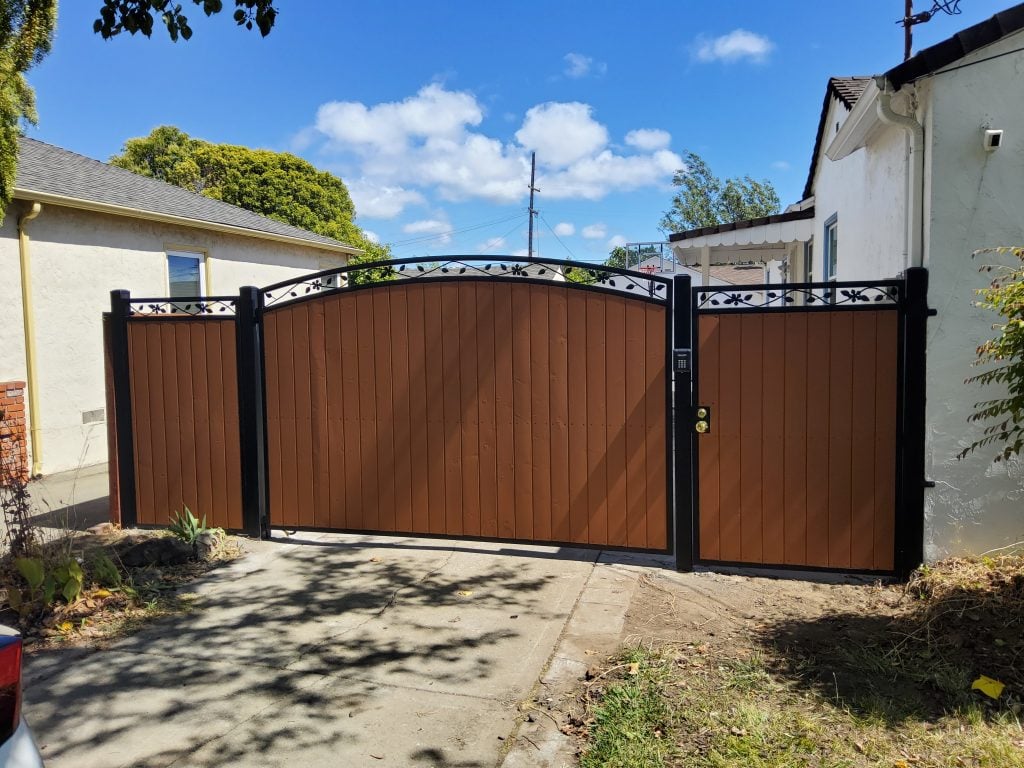[ad_1]
Automatic gates are popular not just for their convenience, but also for their added security in keeping your property safe. They can also enhance the curb appeal of your home or business. However, just like any machine, they can break down and encounter issues. In this article, we will discuss five common automatic gate problems and how to fix them.
1. The Gate is Not Responding to Remote Control
When the gate does not respond to the remote control or is only working intermittently, it’s possible that the gate operator’s batteries need to be replaced. Check the remote control batteries and replace them if necessary.
If the batteries are alright, check if there are any obstructions or debris blocking the gate’s photo-eyes or sensors. Photo-eyes are responsible for detecting if there are objects or people within the gate’s path. Check if they are correctly aligned and clean.
Another reason the gate may not be responding to the remote control could be due to interference from other electronic devices. Try moving the gate opener’s antenna to improve reception.
2. The Gate is Moving Slower Than Usual
If the gate appears to be dragging or slower than usual, there may be an issue with the gate opener’s motor. Check if there are any visible signs of damage or wear and tear, such as cracked or missing gears.
Next, check the gate’s tracks, wheels, and bearings. Over time, these components can accumulate dust, dirt, or debris, which can cause the gate to move slowly or get stuck.
Lubricate the gate’s moving parts with a silicone spray or lithium grease to remedy any friction that might be causing the slow movement. Also, ensure the gate’s rollers or bearings are clean and free of debris, and they roll evenly along the track.
3. The Gate is Not Opening or Closing
If the gate is not opening or closing, check the gate’s power supply first. Make sure that the gate’s circuit breaker or fuse is functioning correctly.
Next, check the wiring connections between the gate operator and the control panel. Ensure all connections are tightly secured and free of any corrosion or rusting.
Another reason the gate may not be opening or closing could be the limit switches. The limit switches are responsible for regulating the gate’s opening and closing positions. Check if the limit switch is working correctly by testing it on the control panel. If the switch is faulty, it may need to be replaced.
4. The Gate is Making Unusual Noises
Grinding or screeching sounds from the gate can indicate a severe problem. If the noise is coming from the gate opener’s motor, it may suggest that there is damage or wear and tear in the gear shafts. Lubricate the gear shaft properly with the right lubricant to solve the issue.
If the sound is coming from the gate’s hinges or metal parts, it could be an indication that the gate needs to be lubricated. Use a non-corrosive, rust protection lubricant to eliminate any sounds coming from the gate hinges or metal parts.
5. The Gate is Stuck Open or Closed
If the gate is stuck in the open or closed position, check if there are any physical obstructions, such as debris or objects blocking the gate’s wheels or track.
Also, inspect the gate’s wheels, track, and bearings to ensure they are functioning correctly. Any damages or malfunctions in these components can cause the gate to stick.
If the gate opener’s motor is overheating or overloaded, it can cause the gate to get stuck. Allow the motor to cool off for a few minutes before attempting to operate the gate again.
FAQs-
1. Can I fix automatic gate problems myself?
It depends on the severity and nature of the problem. Some automatic gate issues can be easily resolved without professional assistance, such as replacing remote control batteries or cleaning the gate’s moving parts. However, if the problem is more complex, it’s recommended to seek professional help. Trying to fix a problem without the right knowledge may lead to further damage or accidents.
2. How often should I lubricate my automatic gate?
It’s recommended to lubricate the gate’s moving parts, such as hinges and bearings, every six months or as necessary. This will extend the life of the gate and reduce the risk of malfunctions or breakdowns.
3. Can weather conditions affect the gate’s operation?
Extreme weather conditions, such as heavy rains, snow, or heat, can damage the gate operator’s motor and affect its operation. It’s recommended to protect the gate’s control panel and motor from harsh weather conditions by installing protective elements, such as a seal or cover.
Conclusion:
Automatic gate problems can be frustrating and hinder the convenience and security they provide. However, by understanding the common problems and how to fix them, you can ensure that your gate works correctly and lasts longer. Remember to seek professional assistance when necessary and maintain your automatic gate regularly for optimal operation.
[ad_2]


